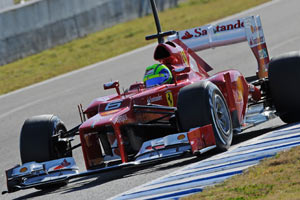Chuckjr wrote:dren wrote:That was a good observation by Scarbs. Are the wheels homoligated at the start of the season? This looks like something the other teams would be able to easily jump on.
Indeed it is. Having half or 1/3rd the turns cuts time and the thicker threads would tend to be less susceptible to cross threading...Macca could learn something in this.
James Allen reporting that their speed is also down to new jacks:
Here's a sensational stat from BBC Radio 5 live commentator James Allen. Ferrari are seven tenths of a second quicker than the next fastest team - which is McLaren - when it comes to doing pitstops. That's an incredible advantage. Allen puts it down to a couple of fancy new jacks. "The team have some work on the front and rear jacks," he said. "They are a work of art in themselves. The detailing that goes in the hydraulic rams is incredible."
And a bit more about the mid wing:
BBC F1 Technical Analyst Gary Anderson
"If you look at Fernando Alonso's car, he's got a mid wing mounted above the crash box. You're allowed 150mm of width there. What they're trying to do is get the flow of the upper wing to talk to flow of mid wing which talks to flow of the diffuser. It makes the diffuser work more efficently. They have one of those on Alonso's car but not on Massa's car so that's why they've got the flo-viz paint on both cars - to compare results."








